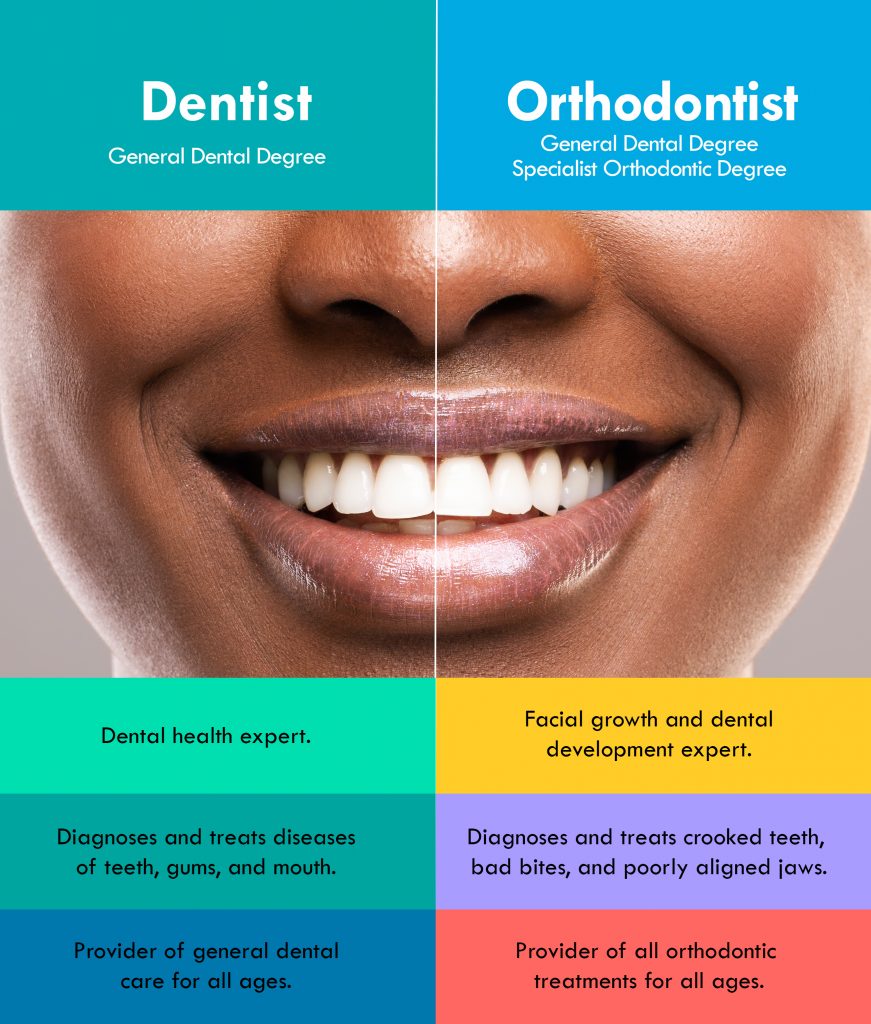Legacy Orthodontics Fundamentals Explained
Legacy Orthodontics Fundamentals Explained
Blog Article
Some Ideas on Legacy Orthodontics You Should Know
Table of ContentsThe Best Strategy To Use For Legacy OrthodonticsA Biased View of Legacy OrthodonticsThe Single Strategy To Use For Legacy OrthodonticsThe Legacy Orthodontics IdeasWhat Does Legacy Orthodontics Do?
In addition, we offer flexible therapy routines, flexible settlement choices and an enjoyable, satisfying experience.An orthodontist is a dentist educated to identify, prevent, and deal with teeth and jaw irregularities. They correct existing conditions and are trained to recognize troubles that may develop in the future. Orthodontists collaborate with individuals of all ages, from youngsters to adults. People frequently associate a best smile with health.
Malocclusion, or misaligned teeth, can result in oral problems, including tooth decay, periodontal condition, and tough or excruciating eating. However not every person is birthed with straight teeth. If you have a negative bite or big areas in between your teeth, you may desire to seek advice from a dental expert specializing in orthodontic treatment.
Some Known Facts About Legacy Orthodontics.
( Image Debt: DigitalVision/Getty Images) Orthodontists use taken care of and removable oral gadgets, like braces, retainers, and bands, to alter the setting of teeth in your mouth. Orthodontic treatment is for dental irregularities, consisting of: Jagged teethBite issues, like an overbite or an underbiteCrowded teeth or teeth that are as well far apartJaw misalignmentThe objective of orthodontic treatment is to enhance your bite.
A healthy bite ensures you can eat, eat, and talk effectively. While you may think about orthodontists as generally for children or teens that require braces, they can correct dental issues at any age. Orthodontists attend college, dental institution, and orthodontic institution. After graduation, they spend 2 or 3 years in an orthodontic residency program.
, but not all dentists are orthodontists. They focus on two areas: Just how to effectively and securely move teeth How to correctly guide growth in the teeth, jaw, and faceOnce an orthodontist has finished training, they have the choice to become board accredited.
Some Known Details About Legacy Orthodontics
Malocclusion leads to tooth overcrowding, a misshapen jaw, or irregular bite patterns. Malocclusion is normally treated with: Your orthodontist affixes metal, ceramic, or plastic square bonds to your teeth.
If you have just minor malocclusion, you might be able to utilize clear braces, called aligners, as opposed to typical braces (https://writeablog.net/legacyortho/your-smile-deserves-the-best-choose-a-leesburg-orthodontist). Some people need a headgear to assist relocate teeth into their website line with pressure from outside the mouth. After dental braces or aligners, you'll need to put on a retainer. A retainer is a personalized device that keeps your teeth in position.
They can develop added space in the mouth without having to draw teeth. Orthodontists make use of wires, medical screws, or plates to sustain your jaw bone.
You might need to see an orthodontist if you have: Crowding or not adequate room for all of your teethOverbite, when your upper teeth come by your base teethUnderbite, when your bottom teeth are also far forwardSpacing or problems with gapsCrossbite, which is when your top teeth fit behind your base teeth when your mouth is closedOpen bite or a vertical gap between your front bottom and top teethMisplaced midline, when the facility of your base and upper teeth don't line up Dealing with an oral malocclusion can: Make attacking, chewing, and talking easierImprove the proportion of our face and your general appearanceEase pain from temporomandibular joint conditionsSeparate your teeth and make them much easier to clean up, aiding protect against dental cavity or tooth cavities It's usually a dental professional that initially notifications misaligned teeth throughout a regular test.
The 15-Second Trick For Legacy Orthodontics

Throughout your initial orthodontic assessment, you'll likely have: An oral examPhotos taken of your face and smileDental X-raysPanoramic (360 degree) X-rays of your face and headImpressions to create molds of your teethThese examinations will help your orthodontist know how to wage your treatment. leesburg clear braces. An orthodontist is a dental expert that's had training to treat your teeth and jaw
Orthodontists might do surgical procedure, exams,X-rays,and even more to aid you obtain a much more comfortable, healthier smile. An orthodontist is focused on your bite, so something like a broken tooth would be handled by a dental practitioner. Orthodontists are dental practitioners yet not all dental practitioners are orthodontists. Orthodontists are concentrated on your bite, or the means your teeth meshed, and the straightness of your teeth.
Ever wondered just how celebrities constantly seem to have perfectly aligned teeth? The solution usually depends on the knowledgeable hands of an orthodontist. But what precisely does an orthodontist do? Orthodontists are dental experts that focus on dealing with abnormalities in the teeth and jaws. Their experience surpasses just developing a beautiful smile; it expands to enhancing your overall oral health and function.
8 Easy Facts About Legacy Orthodontics Explained

While dental braces are one of the most frequently recognized orthodontic treatment, orthodontists have a diverse toolkit at their disposal. The certain strategy chosen depends on the seriousness of the situation, the person's age, and individual preferences. These tried-and-true braces utilize a system of brackets bonded to the teeth and connected by wires.
These detachable trays are personalized to considerably change the teeth's setting. In situations of narrow jaws, palatal expanders can be utilized to create room for correct tooth placement.
Report this page